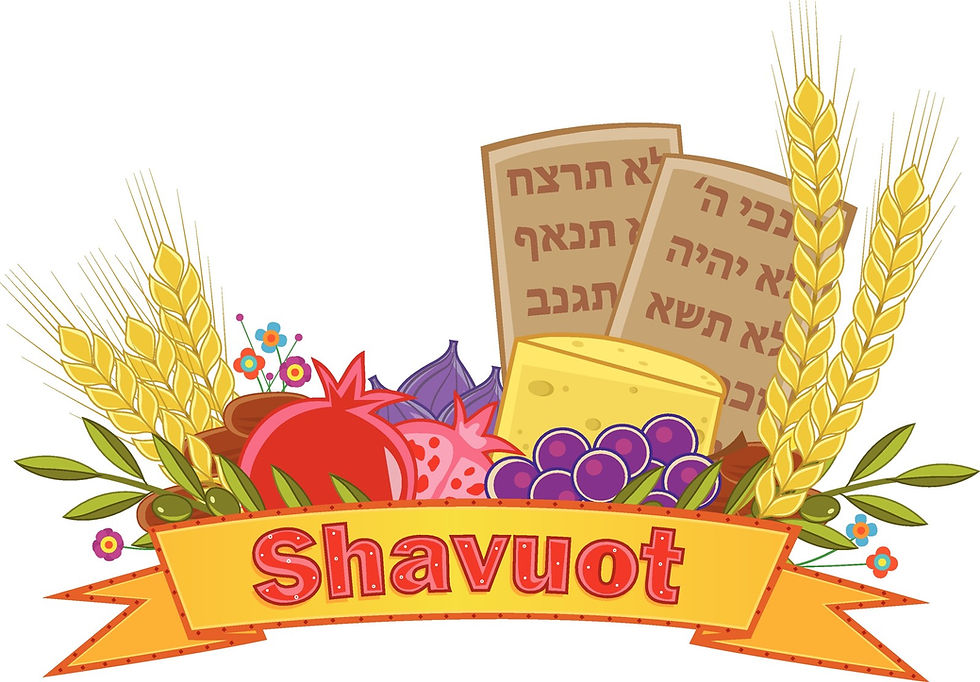about Shavuot
- Minyan Team

- May 19, 2022
- 1 min read
By Jacqueline Kaye

This week we are going to look at Shavuot and its origins as an agrarian festival. In ancient times, the grain harvest lasted 7 weeks and represented a season of gladness. It began with the harvesting of the barley during Pesach and ended with the harvesting of the wheat at Shavuot. Shavuot is thus the concluding festival of the grain harvest. It is indeed known as the Feast of Weeks because it takes place on the first day after seven cycles of seven days, with each week known in Hebrew as Shavua and its plural being Shavuot or “weeks”.
During the existence of the Temple in Jerusalem, an offering of two loaves of bread from the wheat harvest was made on Shavuot. Shavuot is also the festival on which the first harvest of fruit trees was brought to the Temple, hence its other name, Chag HaBikurim, or the Feast of First Fruits. Although we don’t think of grain as representing a fruit, wheat and barley nevertheless represent fruits of the Earth given to us by Hashem in addition to the other 5 first fruits, i.e. grapes, figs, pomegranates, olives and dates.
For those who wish to read more about how our views on the agrarian nature of this feast relate to our attitude nowadays towards the land and our food supply, please follow the link to this Huffington post article on A Call For An Agrarian Torah:




Comments